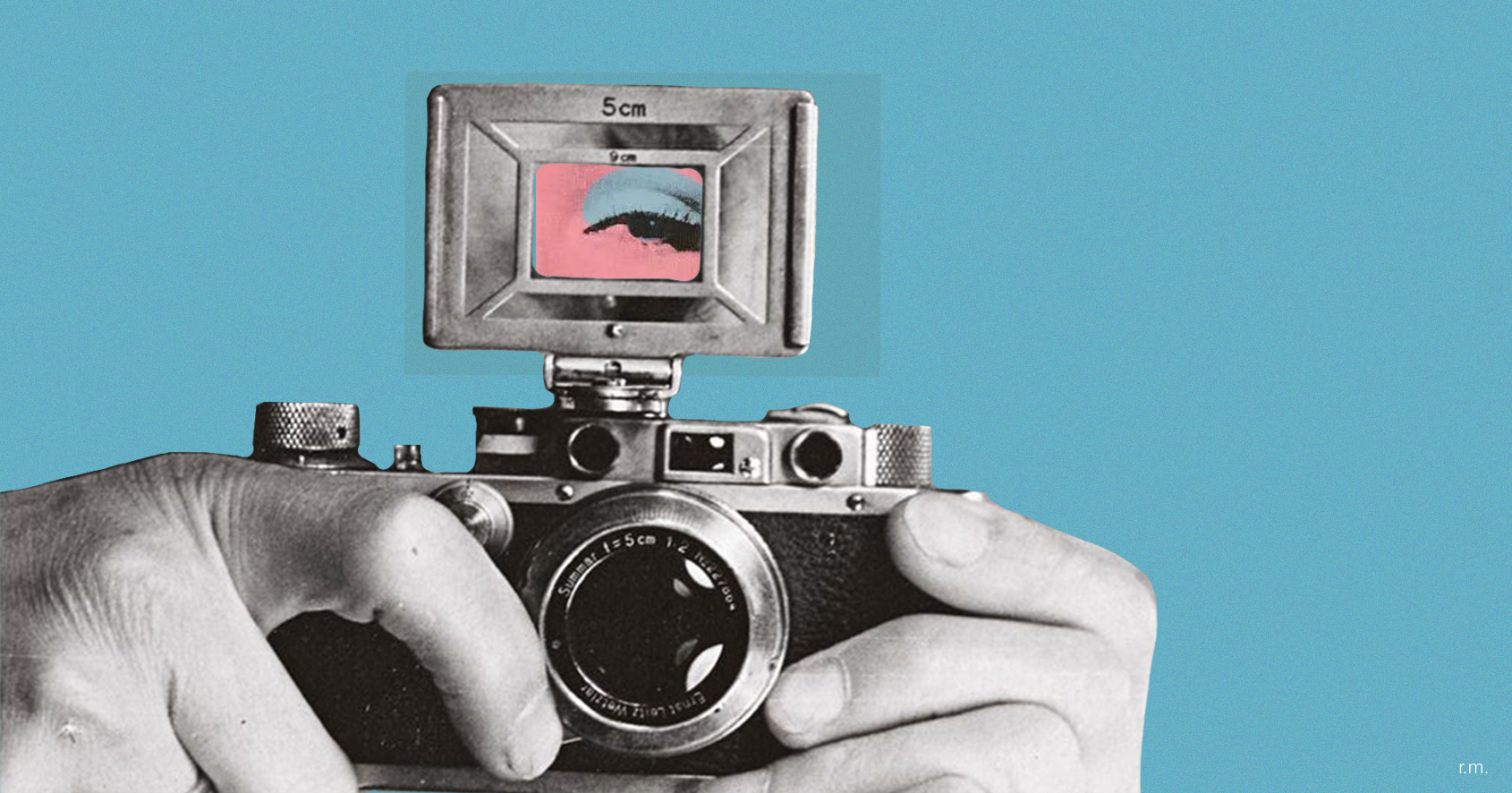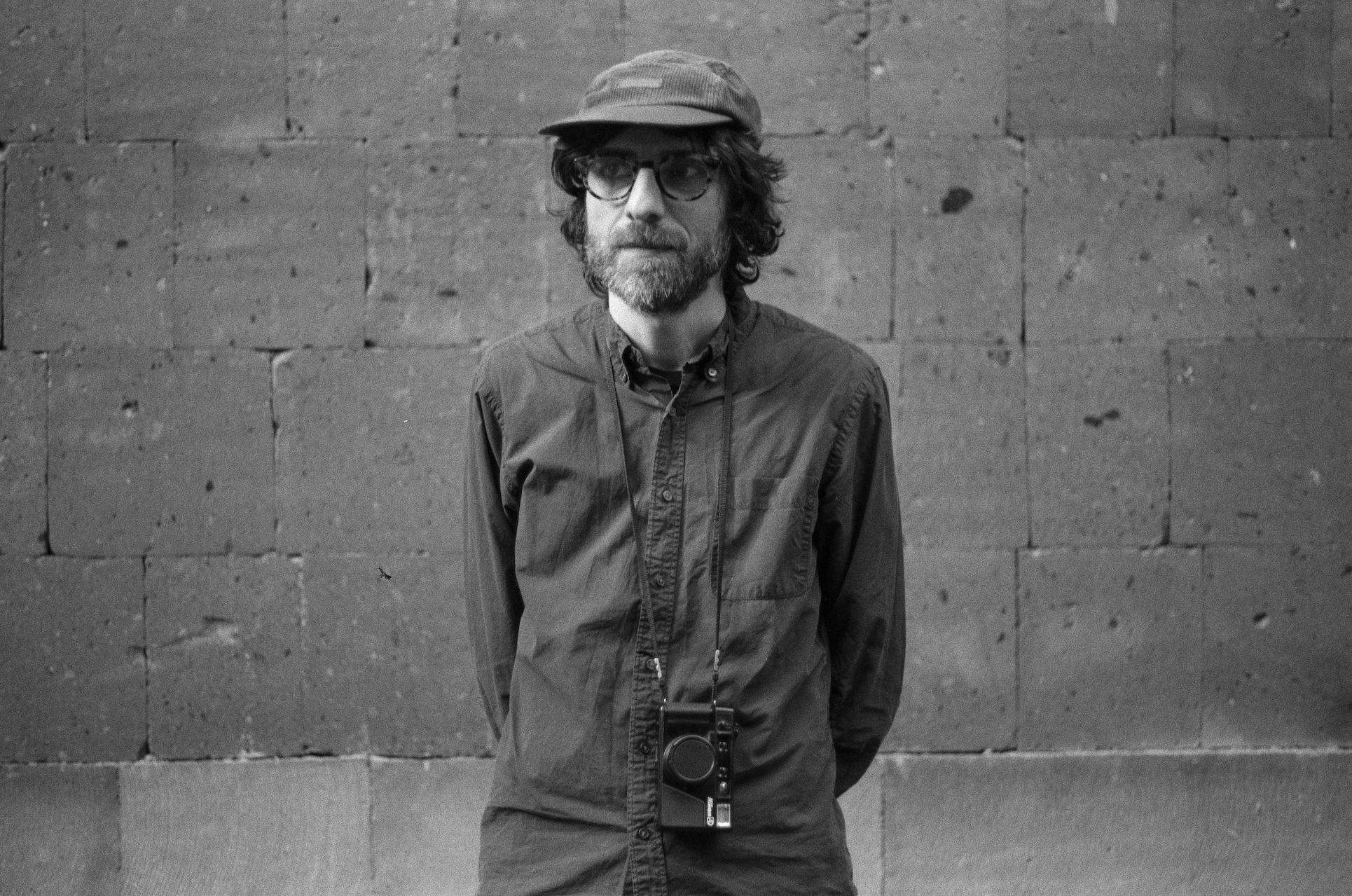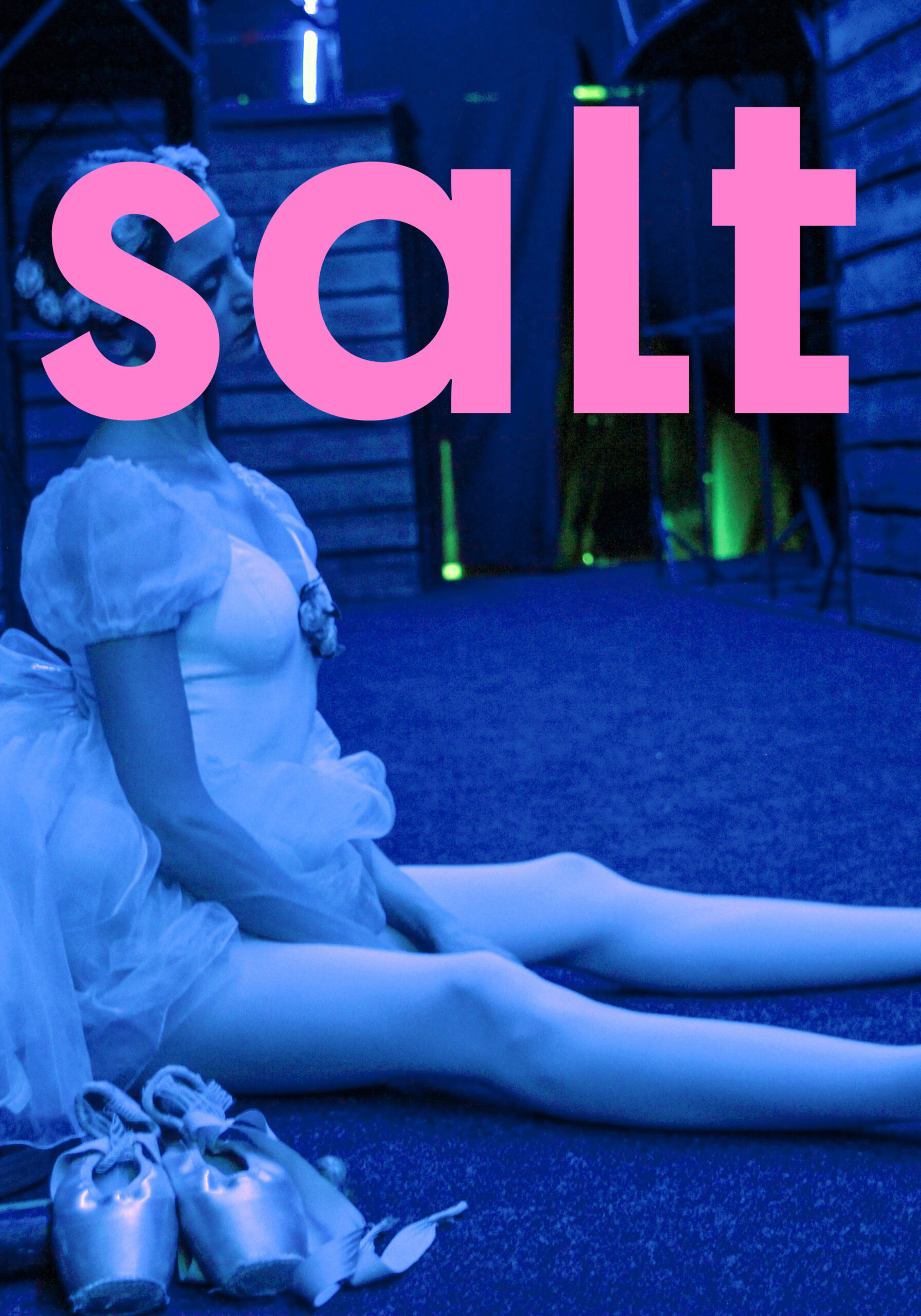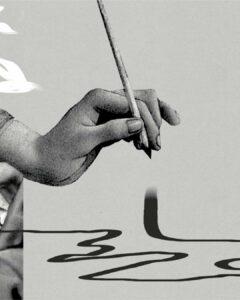
Listen to the author’s reading of the article.
March 2022. It was snowing. I rushed up the wet stairs of the Zoravar Andranik metro station. I knew the way by heart: out of the underpass, left at the pedagogical university, right for a few blocks, then left again- 30 Chaykovsky Street. That’s where the photo lab was supposed to be. The snow blurred my vision. I was in a part of the city I barely knew. I had no map or phone; mine had slipped from my hand weeks earlier and hadn’t survived the fall. Of course, not having a phone these days is about as practical as showing up to your own wedding without a wedding dress, but it had also been my only camera. A new one was out of the question.
The desire to capture moments didn’t magically disappear because my phone did. So I “borrowed” my grandmother’s camera thinking I could simply continue taking pictures as before. That’s when I learned it needed film- which my family claimed would be impossible to find. I didn’t even know what film was, nor did I know why the camera didn’t have a screen. But after some painful research and a tip from a friend about where to buy film rolls, I was on a quest to find Box Photo Lab.
I imagined that the lab would have an entrance like a burlesque show- big glowing lights, signs with its name, arrows pointing the way- making it impossible to miss. But after half an hour of pacing up and down the street, and strangers who shrugged in confusion at my questions about a photo lab, I realized there wouldn’t be any arrows. I even thought I might be in the wrong location entirely, but kept asking people just in case.
The cold, my heavy backpack, uncomfortable shoes, and the feeling of wasting time wore me down.
I stopped in front of this gray door to catch my breath and reflect.
Do I really need to take photos this badly?
As I considered heading home, I stared at the white sign beside the door, trying to make sense of the text. I couldn’t.
A woman was walking in my direction- one last try. She kindly looked up Chaykovsky 30 on the map. Apparently, I had been standing in front of it for five minutes. My glasses fogged up. From the snowy, gray and cold setting of Yerevan, I stepped into a space filled with dim yellowish lights, a calming scent, tasteful and groovy music, exposed brick walls, and an interior that whispered “take your time”. I took a few steps, half excited, half terrified that this still might not be the place. “Is this Box Photo Lab?” I asked the guy behind the counter- who wore round glasses and a mustache- and he nodded. I sighed in relief.
I pulled my grandma’s point-and-shoot film camera from my backpack and admitted I didn’t know how to use it. He explained everything: how to insert a film roll (which I bought there), how to tell when it’s finished, and the development process. Well. This wasn’t nearly as complicated as my quest to find the lab. But the long, winding journey turned out to be completely worth it.
I used all 24 shots in a day. I couldn’t wait to see how they would turn out. When I returned the next day to drop off the roll, they told me I’d get the scans in two to three days. The anticipation of seeing the results stirred something inside me I didn’t even know existed.
March 17, 2022. I got the email: “Box Photo Lab sent you 1260.” The excitement felt like a billion butterflies raving in my stomach. I went back to buy another roll- that’s how my addiction began.
The guy with the round glasses and a moustache was Toros Khachatryan, the co-founder of Box Photo Lab.

Toros Khachatryan at Box Photo Lab, 2025.
Film: Ilford HP5 Plus, ISO 400
Box Photo Lab
There’s a courtyard in the center of Yerevan that everyone calls “the box courtyard.” It is just behind a boxing school- that’s how it got its name.
In 2018, Toros’ university friend, Victor Zatikyan, rented a studio there. One day, he asked Toros to come by and develop a roll of film for him. Toros arrived- carrying all his chemicals and equipment. “And obviously,” he recalls, “everything stayed there.”
Toros and Victor bonded over film photography from the start. They literally bumped into each other at university- Toros with a medium format Kiev/Salut around his neck, Victor with a Zenit. Everyone was caught up in what Toros calls “a marathon”- the constant push to buy newer, better digital cameras. “Everything had reached pointless perfection.”
One day, Toros got tired of it and showed up to class with his grandfather’s Zenit- a mechanical Soviet film camera- which felt like winning the marathon.
With no services available to develop black and white film, and color labs doing subpar work, Toros had to teach himself. He had no local resources or mentors to turn to. Through trial and error, ruining roll after roll while learning from internet forums and guides, he got good at it.
So when he met Victor that day and asked, “What kind of film is in there?” the answer was black and white. What began as a one-time favor evolved into a space where they developed film for themselves and their friends. Eventually, they realized they could turn it into a service. The name came naturally: Box Photo Lab was born.
The rented studio in the Box Courtyard served multiple purposes- it hosted movie screenings and had a dedicated music area. The whole space was simply known as Box. Despite combining different art forms in one space, the building had started to fall into ruin, forcing them to relocate.
They first moved to another building within the Box Courtyard, staying there for about a year. An opportunity then arose to relocate to Mirzoyan Library- a Yerevan space that merged a café with a photography book library. Here too, they collaborated with artists to create a multifunctional space, staying until rent issues forced them to move out.
Eventually, in 2021, they finally settled at Chaykovsky 30- the place with the gray door and the white sign I couldn’t figure out. I later deciphered the sign: “Vajrapar,” an Armenian word meaning “in vain.” The name, chosen arbitrarily, belonged to a larger shared space that housed not only Box Photo Lab but also projects rooted in fashion and analog music.
“The most epic part,” Toros said, “was watching it grow from nothing to a community that kept growing. It kept doubling in size, like an army.”
People started recommending film photography the way you’d recommend a cafe- like something cool you just had to try. I completely understand this sentiment because I was one of those people.
I urged my friends to try film photography because I didn’t want them to miss out. For a long period of time, it was the only thing I would talk about. I was in love.
Not knowing how a shot turned out until the very end kept me in a constant state of suspense- it became my weapon against mental health issues and nihilism. Suddenly life had meaning because I just had to know how that one goddamn shot turned out. Film was unpredictable, always holding a surprise. Each photo would either turn out so brilliantly that I imagined galleries worldwide would flood me with calls, or it would crush me to tears. Since film was expensive, shots were limited, and I was far from wealthy, I had to think carefully about every photograph. I needed to be certain about the light, the composition and whether a scene was truly worth capturing. Shooting on film felt like a breath of fresh air in an age where everything was infinite and effortless. And in a poetic way, I was captivated by the idea that light was creating chemical reactions on silver-filled ribbons- to me, this was photography in its purest form. Best of all, I got to keep my memories in physical form.
The revival of film photography happened in both Yerevan and worldwide for similar reasons. According to Toros, some people started getting into it simply because it became a popular trend on social media. The vintage aesthetic of film was heavily romanticized, with point-and-shoot cameras becoming part of the look.
Japaven
In August 2022, I bought my first proper mechanical film camera, which helped me grasp the technical aspects of photography and heightened my awareness of my surroundings. I realized that visual arts would always be part of my life, regardless of my career path. It gave me a sense of purpose. In 2023, I applied to be a speaker at an event organized by a friend to discuss my greatest passions- film photography, of course, was one of them.
I shared my journey of finding the photo lab. How film photography was demanding, yet it taught me to look at the world with greater attention and patience. How sometimes, I learned, difficulty is the price of meaning.
Public speaking, however, was not among the things I loved. I cringe when I remember that nerve-wracking session of oversharing. Yet, in the spirit of difficult things leading to better ones, that speech led me to two people who shared my passion for film: Norayr Chilingaryan and Tigran Simonyan.

Norayr Chilingaryan (left) and Tigran Simonyan (right), Yerevan, 2025.
Film: Ilford HP5 Plus, ISO 400
Through them I discovered that there’s a whole website dedicated to Armenian film photography called Japaven, [ribbon in English] created by Norayr.
Norayr believes in documenting the film photography movement- capturing how people in Armenia shoot, why they shoot, and what it means to them. He and Tigran emphasize the importance of writing these stories in Armenian, specifically for local photographers who might not speak other languages. While the internet abounds with film photography forums and blogs, none about the unique experience in Yerevan. Norayr filled this gap.

Tigran Simonyan, Yerevan, 2025.
Film: Film: Ilford HP5 Plus, ISO 400
The website now features 14 contributors, including Tigran Simonyan. His recent writing transcends documenting the practical experience, drawing a parallel between film and self, suggesting that shooting on film isn’t something you do, but something you are.
“We are film—never before exposed, fragile in nature but strong in form.
In the darkness of night, we reveal ourselves, striving to remember
only what was beautiful.”
Reading this in my native tongue- Armenian- made me feel closer to film photography.
Until then, my experience with film had felt like a solitary obsession. But through conversations and articles on Japaven, I discovered a community of predecessors who shared this passion, even before Box Photo Lab existed.
Norayr was there to witness it all.
By the 2010s, digital cameras had taken over the market, leaving Yerevan without quality photo labs. The few remaining facilities used expired chemicals simply because they couldn’t afford new ones and black and white film processing had ceased entirely.

Norayr Chilingaryan, Yerevan, 2025.
Film: Ilford HP5 Plus, ISO 400
At the time, Norayr was shooting digital in black and white and film in color. But even with color, the local labs weren’t doing a good job. In 2012, he began searching for equipment in Tbilisi. There he met Andrey, a film camera seller, who introduced him to Lab25- a hobby lab run by Giorgi Kharadze. According to Norayr, it was the only professional film lab in the region.
Over time, film photographers in Yerevan began sending their rolls with a local tour guide who regularly traveled to Georgia. The guide would collect requests on specific films- without knowing if it was available- drop off undeveloped rolls at Lab25, and bring back new ones for people.
But why go through such a complicated process- limited shots, expensive film, trips to Georgia and back- when you could just use a digital camera? For Norayr, the answer is simple: limitation. When he got his first digital camera in 2007, after years of shooting film, he started taking 500 photos a day- and none of them were good. He wasn’t checking the light, the framing, the timing. He’d just shoot and think about it later. Film had trained him to think before pressing the shutter. Digital made it easy to forget that.
Karmir Film Lab
Levon Badikyan founded Karmir Film Lab in 2020, inspired by his passion for film photography. After his cinematography studies in Saint Petersburg he returned to Armenia, contemplating whether to open a small cinema or a film lab.

Levon Badikyan, Karmir Film Lab, Yerevan, 2025.
Film: Ilford HP5 Plus, ISO 400
Levon had been shooting on film since he was 16, sending rolls to Russia or Europe for development- a gamble, since airport X-rays could easily ruin them. During the pandemic, with not much else to do, he dove deeper into film processing. He rented a tiny room in central Yerevan and launched an Instagram page called Karmir (“red” in Armenian, a nod to the glow of the darkroom). For the first year, he only developed film for himself and a few friends, turning down outside requests. But as he began sharing his work online, interest started to build. He offered free development at first, without deadlines, all while keeping his day job.
In 2022, the creative collective “The Office” offered him a space. That’s when the lab became official. Over the next year and a half, it grew significantly.
I discovered Karmir Film Lab later, after I’d already become a regular at Box. But discovering another lab with its own unique story, enriched my perspective. Having two labs in a city as small as Yerevan elevated the entire experience. Their friendly competition drove both to improve, resulting in better quality, more choices, and a stronger community.
As color film prices skyrocketed post-COVID, Karmir began spooling Kodak film under its own label to make it more affordable. During this time, Levon’s friend and former classmate from Russia, Aleksey Komoza- whom he had known since 2017- joined as a co-founder.
Levon maintains that digital technology hasn’t matched the quality of well-processed film, particularly 120 mm formats that have no digital equivalent. Through experimenting with scanners and pushing film’s capabilities, they transformed their personal project into a viable business.
In 2024, they moved the lab to 23 Gevorg Kochar Street. With two film labs in the city, each with its own strengths, Yerevan’s analog photography scene didn’t just grow- it evolved through contrast, not conformity.
P.S.
May 2025. It’s sunny. Film photography is flourishing in Yerevan. Karmir Film Lab is expanding outside Armenia having opened a branch in Belgrade in 2024 with plans to launch a Los Angeles branch in September 2025. Meanwhile, Box Photo Lab has expanded within Yerevan; a new branch near Saryan Street opened on June 21, making their services more accessible. They eventually added their name to the gray door with its white sign, which should help anyone wandering around with their grandmother’s camera find their way. My drawer of film negatives, meanwhile, is reaching its limits- I’m running out of space to store them all.
Film photography has taught me patience, appreciation and harmony. It has also taught me resilience- to endure and trust the process, even when it’s difficult. Right now, my mechanical film camera is broken, and I’m uncertain about what comes next. But I know that whatever happens will help me develop. Like film itself: fragile in nature, but strong in form.
Photos by Lilith Markaryan.
Under the Open Sky

Cover photo by Gibran Caroline Boyce.
The June issue of SALT explores how tradition and reinvention meet across culture, style and taste. We look at the growing comeback of film photography through the lens of Yerevan’s photo labs, feature a visual story of open-air ballet performances in Tumanyan Park, visit Hummus Kimchi, a restaurant blending Jewish and Korean cuisines, and talk to Syrian- and Lebanese-Armenian hairdressers who are raising the bar in Yerevan’s beauty scene. Plus, a photo essay captures the energy and atmosphere of Yerevan Wine Days.

